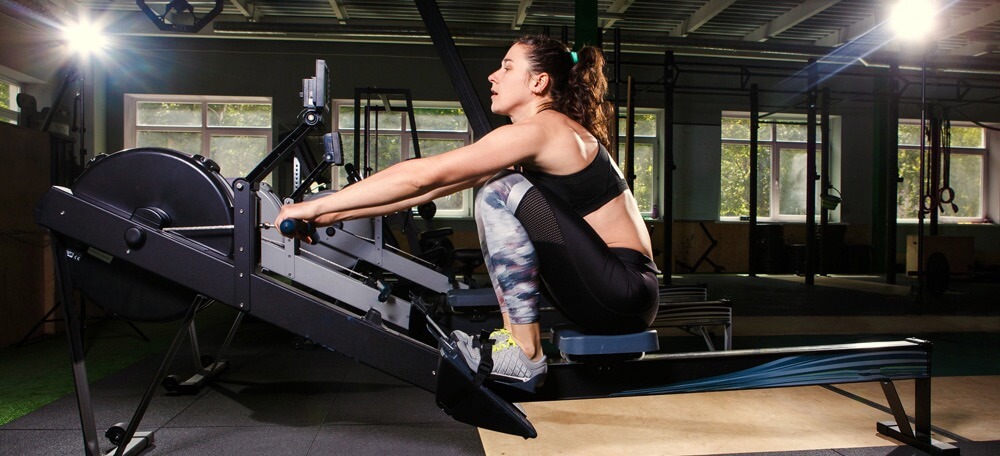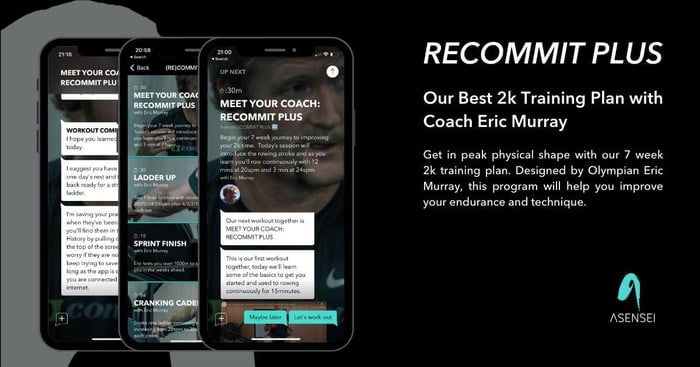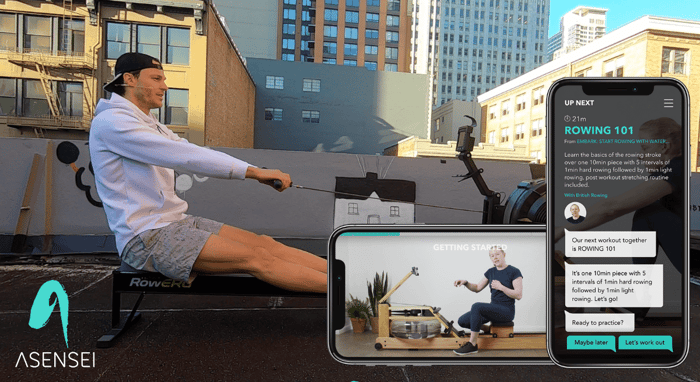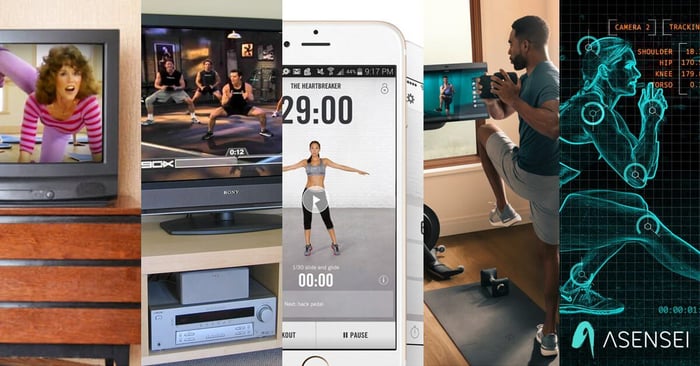Beginners and experienced rowers alike may wonder how long should you work out on a rowing machine for, to best reap the benefits of the machine’s full-body workout. The answer to this question depends on a variety of factors, including fitness goals, current fitness level, and workout intensity.
If you’re working out for health reasons or to improve your fitness, using a rowing machine for 30 minutes a day at a moderate intensity, or 15 minutes a day at a vigorous intensity, is enough. If you’re looking to lose weight, you might need to do more. Most important is consistency. Working out regularly for 30 minutes will help you achieve your goals better than working out for an hour occasionally!
We’ve put together a comprehensive guide to how long you should use a rowing machine for to best reach your goals: read on to find out more!
Table of Contents
Factors that affect rowing machine workouts
Your fitness level is one of the main factors that can affect how long should you work out on a rowing machine for. If you’re a beginner, you may want to start with shorter workouts, and gradually increase the duration as your fitness improves. If you have a higher level of fitness, but perhaps are coming to rowing as a lower impact alternative or complement to running or contact sports you should be able to train for longer periods. We’ll explore these ideas further in the sections below.
The asensei rowing app will track your workouts and time them according to your level. Additionally, your goals can also impact how long you should use a rowing machine. For example, if you’re looking to lose weight, you may need to use the machine for longer periods of time than if you’re just trying to maintain your fitness level.
Your schedule can also play a part in determining how long to use a rowing machine. If you’re short on time, you may need to spread shorter workouts throughout the day rather than one long session or you might prefer to focus on shorter High Intensity workouts such as tabata.
You may also find you’re more or less motivated by the thought of a longer workout, so make sure you take that into account!
Factors that improve your indoor rowing performance and help you reach your fitness goals
In training
Long distance, easy pace training is the optimum training for increasing your rowing performance and overall fitness, as guided by the World Rowing Training Programme for Clubs and Individuals. The required amount of effort should feel like you can still have a bit of conversation during your training, which is based off the optimum heart rate level for increasing your endurance.
Cross training adds variety to your training and helps to increase your overall fitness. For example, cycling, running, and cross-country skiing are all excellent complementary sports to indoor rowing. Weight training is also helpful for increasing strength (which helps you tolerate a high training load), and to identify and target muscular imbalances.
Overall, remember that each person is different, and how we train will vary based on a wide variety of factors, from balancing life to dealing with an injury. Take the time to learn how you can tailor your training to suit your needs!
Outside of training
Outside of training, it is very important to make sure you are doing the following:
- Stretching to increase recovery and prevent injuries
- Proper recovery between sessions to ensure adequate rest
- Getting enough sleep
- Prioritising nutrition: eating appropriately before a rowing session ensures your body is prepared and performing at your best. Ensuring you eat shortly after a rowing session ensures you maximize your recovery for the next day

Recommended rowing machine workout duration
0-1 workouts per week:
You will need to row for only short periods (5-15 minutes) with 1-2 days of rest between each session. You should aim to row for short periods of time at an easy pace. Your fitness will come from regular training, and you should see real results after 1-2 months.
2-4 workouts per week:
You likely have a good fitness level already, and you are able to row for longer distances than a complete beginner — around 15-20 minutes in one go. You should row at an easy pace and you will learn over time what level of effort will allow you to row without stopping.
5+ workouts per week:
This group will include a wide range of athletes, from those with regular fitness to elite athletes. These athletes can build up to 30-minute rows, up to 3 at a time (i.e. a 90-minute workout). The significant workload places a greater emphasis on achieving ‘all-round development’. The body needs to get adequate rest with days off, active rest days, and sleep, as well as needing the right fuel before and after each session, and sufficient hydration.
Injuries will become more likely at higher training loads, so cross training, strength training, stretching, warmups, and cooldowns are just as important as the training itself. If you adopt this focus, you will see significant results in your goals over time.
In short: if you’re working out for general health, using a rowing machine for 30 minutes a day at a moderate intensity, or 15 minutes a day at a vigorous intensity, is plenty. However, if you’re rowing for weight loss or sports training, you might need to do more — around 40 minutes a day.
For beginners, you may find that you can’t complete a 20-minute rowing workout, so pacing yourself and building up to it is essential. How often you should use a rowing machine also depends on your fitness goals, with 4-6 days a week being ideal for fitness training, and greater consistency needed for weight loss. Although rowing is a low-impact sport, it is important to make sure you take breaks and have days off (either to rest or do another form of exercise) where you let your body recover.
How often to use a rowing machine
As well as knowing how long your workouts should be, it is important to understand how often you should work out. If you’re new to rowing, you will need to build up gradually, so beginners might start by training 2-3 times a week, giving the body up to 48 hours to recover. As fitness develops you can start to push to 3-4 times a week, and build up to 5-6 times a week for those really wanting to build endurance.
For example, our (RE)COMMIT program suggests 2-3 workouts a week, our MASTER THE BASICS program is 3 times a week, whilst the more advanced (RE)COMMIT PLUS is 4 workouts a week, and (RE)FOCUS is 5 weekly sessions, building up to a 6km row.
Rowing machine fitness goals
Indoor rowing is an excellent way to improve cardiovascular health and build muscle strength. Depending on your fitness goals, you can use a rowing machine for different durations and intensities. Here are some common fitness goals and how long you should use a rowing machine for to achieve them:
| Fitness goal | Duration | Intensity |
| General health | 30 minutes | Moderate |
| Weight loss | 30-60 minutes | High |
| Muscle building | 30-45 minutes | High |
| Endurance training | 60-90 minutes | Moderate |
It is important to note that the duration and intensity of your rowing machine workouts should be tailored to your fitness level and goals. The ASENSEI rowing app will monitor your progress and help you achieve this balance. Always listen your body and consult a health professional if you have any concerns.

Types of rowing machine workout
There are various types of rowing machine workouts that you can do to achieve different fitness goals. Here are some of the most popular:
Steady state
This workout involves rowing at a consistent pace for an extended period, typically between 20-60 minutes. It is a great workout for building endurance and burning calories.
Intervals
This workout involves alternating between high-intensity rowing and active rest period. The high-intensity periods can range from 20 seconds to several minutes, while the rest periods can be anywhere from 10 seconds to a few minutes. This type of workout is great for improving cardiovascular fitness and burning fat.
Pyramid
This workout involves gradually increasing and then decreasing the intensity of rowing. For example, you might start with a 2-minute warmup, then row hard for 1 minute, row harder for 2 minutes, row hardest for 3 minutes, then repeat in reverse order, then cool down for 2 minutes. This workout is perfect for building endurance and improving overall fitness.
HIIT stands for high intensity interval training and is a form of workout with short intervals of high effort (intensity) and short recovery. You will typically go at maximum effort for a short period of time, and have a very limited time to recover, meaning that your body can experience both aerobic and anaerobic training in a very short space of time.
Tabata is a specific type of HIIT workout that is typically very short and high intensity. This workout involves doing 8 rounds of 20 seconds of all-out rowing, followed by 10 seconds of rest. This type of workout is great for improving anaerobic fitness in a short space of time and burning fat.
For beginners, steady-state workouts may be best, gradually working up to more intense workouts like intervals and pyramids. It is also important to warm up properly before each workout and cool down afterwards to prevent injury and aid in recovery.
Benefits of using a rowing machine
Indoor rowing provides a wide range of benefits for people of all fitness levels, from improved cardiovascular health to supporting injury recovery and rehab. What are the main benefits?
Improved cardiovascular health
When you row, you use your entire body, which increases your heart rate and helps you burn calories. This can help improve your cardiovascular endurance and reduce your risk of heart disease and stroke.
Full-body workout
Rowing works your legs, core, back, shoulders, and arms. This can help you build strength and tone your muscles, as well as helping improve your posture and reduce your risk of injury.

Low-impact exercise
As a low-impact exercise, rowing puts less stress on your joints than other forms of exercise like running. This makes it a great option for people who are recovering from an injury or who suffer from joint pain. Additionally, rowing can help improve your flexibility and range of motion.
Benefits of using an app like asensei rowing
Using an app like asensei rowing can greatly enhance the benefits of using a rowing machine. Here’s why:
Real-time feedback
The asensei rowing app provides real-time feedback on your split times, stroke rates, and technique, allowing you to make adjustments during your workout to improve your form and efficiency.
Personalized programs
The asensei rowing app offers personalized programs tailored to your fitness level and goals, to help you get the most out of your workouts. These programs include various workouts and drills designed to improve your rowing technique and overall fitness.
Find a suitable session
The asensei rowing app allows you to choose a workout based on the type of session, the duration you wish to workout for, and the coach, according to your preferences, to maximize your workout.
Virtual coaching
The asensei rowing app provides virtual coaching from world-class instructors, including Olympic champions and those who have competed at the highest levels. They guide you through each workout, providing motivation and feedback along the way.
Track progress
The asensei rowing app helps you track your progress over time, allowing you to see how far you’ve come, set new goals for yourself, and stay motivated!
Variety: A new rowing workout every day
The asensei rowing app recommends you a new workout every time you open the app, giving you variety and taking away the friction of choosing a session when you just want to get on the rower and go!
Conclusion
Using a rowing machine is an excellent way to improve your overall fitness level, with the amount of time you should spend on a rowing machine depending on your fitness goals and current fitness level.
When using a rowing machine, it’s important to maintain proper form to avoid injury and get the most out of your workout. Starting with a shorter workout time and gradually increasing it can help you build up your exercise into your routine to avoid overuse injuries and keep your workouts interesting — which can help keep your motivation up!
The asensei rowing app can help you find workouts that match your needs, providing coaching and keeping you on track.
FAQs
Is 20 minutes rowing enough for a good workout?
It depends on your fitness goals whether 20 minutes of rowing is enough. If you are looking to improve your cardiovascular health, 20 minutes of rowing can be a good start, particularly if you have a low fitness level to start with. However, if you want to build muscle and burn more calories, you may need to increase your rowing time and add in other forms of exercise, such as strength training.
Is 30 minutes rowing enough for a great workout?
It depends on your fitness goals whether 30 minutes of rowing is sufficient. However thirty minutes of rowing is a great workout for improving most people’s overall fitness and burning calories. However, if you are training for a specific sport or event, you may need to increase your rowing time and intensity to see the desired results. In that situation you may wish to choose a more structured multi-week rowing training program.
Can you get in shape by just rowing?
Rowing is a great full-body workout that can help you improve your cardiovascular health, build muscle, and burn calories. However, it can really help to incorporate other types of exercise such as bodyweight exercises and maintain a healthy diet is essential to achieve optimal fitness results.
Does rowing burn body fat?
Yes, rowing can be an effective way to burn body fat. Rowing is a low-impact exercise that engages multiple muscle groups, making it a great way to increase your heart rate and burn calories. However, it is important to maintain a healthy diet and incorporate other types of exercise, such as bodyweight training to achieve long-term weight loss goals.
ASENSEI ROWING

$150.00 USD
ANNUAL BILLING TO SAVE YOU $$$ Equivalent to just $11.25/month*, money back within 30 days if not satisfied. Or sign up for a flexible monthly plan. Additional discounts only show up on CART page. AMAZING TRAINING APP “The app monitors… Read More





